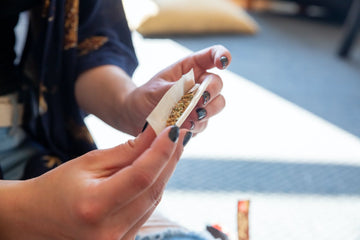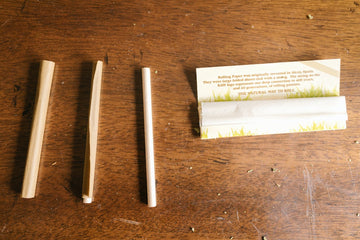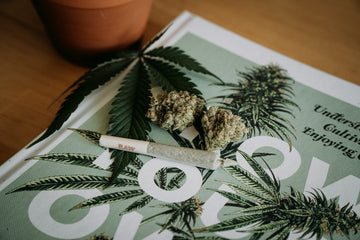Breaking Down Cannabis Consumption Methods: Smoking, Vaping, Edibles, and More
As cannabis legalization continues to sweep across the globe, the variety of consumption methods available to consumers has expanded significantly. From traditional smoking methods to innovative vaping devices and tasty edibles, there's a consumption method to suit every preference and lifestyle. In this comprehensive guide, we'll break down the most common cannabis consumption methods, exploring their benefits, drawbacks, and effects.
Smoking:
Smoking cannabis is one of the oldest and most traditional methods of consumption. It involves inhaling the smoke produced by burning dried cannabis flower in a joint, pipe, or bong. Smoking delivers cannabinoids such as THC and CBD directly into the bloodstream through the lungs, resulting in rapid onset and effects.
Pros:
1. Fast onset: Smoking provides near-instantaneous effects, making it ideal for those seeking immediate relief from symptoms such as pain, anxiety, or nausea.
2. Easy to control dosage: With smoking, users can easily control their dosage by taking smaller or larger hits as needed.
3. Variety of options: There are numerous smoking devices available, from classic joints to intricate bongs, allowing users to customize their experience to their preferences.
Cons:
4. Health risks: Smoking cannabis, like smoking tobacco, can have negative effects on lung health, including irritation of the respiratory tract and increased risk of respiratory infections.
5. Odor: Smoking cannabis produces a strong, distinct odor that can linger on clothes, hair, and furniture, potentially causing social stigma or discomfort for some users.
6. Harshness: Smoking can be harsh on the throat and lungs, especially for inexperienced users or those with respiratory issues.
Vaping:
Vaping has gained popularity in recent years as a more discreet and potentially healthier alternative to smoking. Vaping involves heating cannabis flower or concentrates to a temperature that releases cannabinoids and terpenes in the form of vapor, which is then inhaled through a vaporizer device.
Pros:
1. Reduced health risks: Vaping is often considered a safer alternative to smoking, as it produces vapor rather than smoke, which may be less harmful to the lungs.
2. Discreet: Vaporizers produce minimal odor and dissipate quickly, making vaping a more discreet option for those who wish to consume cannabis without drawing attention.
3. Precise dosing: Many vaporizers allow users to control the temperature and dosage, providing a more consistent and controlled experience.
Cons:
1. Initial cost: Vaporizers can be expensive upfront, with some high-end models costing hundreds of dollars. However, many users find that the long-term savings on cannabis outweigh the initial investment.
2. Learning curve: Using a vaporizer may require some practice and experimentation to find the optimal temperature and technique for vaporizing cannabis effectively.
3. Battery life: Portable vaporizers rely on batteries, which may need to be recharged frequently, especially with heavy use.
Edibles:
Edibles offer a convenient and discreet way to consume cannabis without the need for smoking or vaping. Edibles are food and beverage products infused with cannabis extracts, such as cannabis-infused oils or tinctures, which are absorbed through the digestive system.
Pros:
1. Long-lasting effects: Edibles typically have a slower onset compared to smoking or vaping, but the effects can last much longer, often lasting for several hours.
2. Discreet: Edibles can be consumed without drawing attention, making them ideal for situations where smoking or vaping may not be appropriate.
3. Precise dosing: Commercially produced edibles are often labeled with the precise dosage of THC or CBD, allowing users to control their intake more accurately.
Cons:
1. Delayed onset: Edibles can take anywhere from 30 minutes to two hours to take effect, depending on factors such as metabolism and stomach contents. This delayed onset can make it easy to consume too much, leading to overconsumption and potentially uncomfortable or unpleasant effects.
2. Inconsistent dosing: Homemade edibles may vary in potency, making it challenging to achieve consistent dosing from batch to batch.
3. Potential for overconsumption: Edibles can be deceivingly potent, especially for inexperienced users. It's essential to start with a low dose and wait for the effects to kick in before consuming more.
Other Consumption Methods:
In addition to smoking, vaping, and edibles, there are several other cannabis consumption methods worth mentioning:
1. Topicals: Cannabis-infused topicals such as creams, lotions, and balms are applied directly to the skin and absorbed through the pores. Topicals are often used for localized relief from pain, inflammation, and skin conditions without producing psychoactive effects.
2. Tinctures: Cannabis tinctures are liquid extracts of cannabis typically made by steeping cannabis flower or concentrates in high-proof alcohol. Tinctures can be dosed using a dropper and added to beverages or consumed sublingually (under the tongue) for fast-acting effects.
3. Dabbing: Dabbing involves vaporizing cannabis concentrates, such as wax, shatter, or budder, using a specialized dab rig or vaporizer. Dabbing delivers high concentrations of cannabinoids and terpenes, resulting in potent and immediate effects.
4. Capsules: Cannabis capsules contain measured doses of THC, CBD, or a combination of cannabinoids and are swallowed like traditional pills. Capsules provide a convenient and discreet way to consume cannabis, with precise dosing and predictable effects.
The world of cannabis consumption methods is vast and varied, with options to suit every preference and lifestyle. Whether you prefer the fast-acting effects of smoking, the discreet convenience of vaping, or the long-lasting effects of edibles, there's a consumption method to fit your needs. By understanding the pros and cons of each method, as well as their effects and potential risks, consumers can make informed choices about how to incorporate cannabis into their lives safely and responsibly. As always, it's essential to start low and go slow, especially when trying new consumption methods or products, to avoid overconsumption and ensure a positive experience.




















